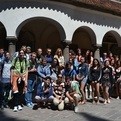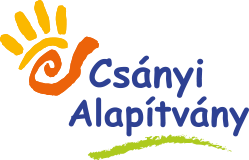
Historical tour in Upper Hungary / Slovakia
This summer I had the opportunity to take part in a historical tour in Upper Hungary organised by the Csányi Foundation for talented children as a volunteer group leader of 16 to 17-year-old students.
We took part in a five day tour. There were three mentors and two volunteers including myself looking after the group. (Kaposvár, Jászberény, Pécs). We visited churches and castles. We got a little closer to our ancestors lives. In the outdoor museum of Ólubló, we could read about a lot of interesting and still living traditions and houses and jobs of old times unfolded before our eyes. Even I learnt new things and I got to travel to places I had never been to. In the ice cave of Dobsina we could marvel the fascinating ’’work” of nature and a lot of us gasped with admiration in the stalactite cave of Gombaszög seeing the different shapes of stalactite and stalagmite. Climbing up to the castle of Szepesváralja was a real challange for the group, looking back sometimes on our way up we had a nice view of the whole town. The hardest task for a lot of us was brought by a hiking in the Slovak National Paradise. The beauty of nature came to life before us. On our way we crossed mountain creeks, climbed over cliffs, went across suspension bridges helping, supporting and encouraging each other. The peaks of the Tatra Mountains that we could see from the windows of our lodgings, the gothic buildings, the unique, enormous, wooden altar of the church in Lőcse were all engraved upon our memory for good. Although the bus journeys to the programmes and sights sometimes proved to be tiring, we returned home having seen and learned plenty. I got to know a close knit, friendly, cheerful group of teenagers. During the five days of travelling they used their English and German knowledge excellently.
In my opinion, spending all this time together, having all these experiences together got the members of the different groups closer to each other, old friendships turned deeper and new ones were made. I watched in admiration how quickly and efficiently these young people adjusted to the foreign language environment, how confidently they used the learned foreign languages, how polite and well-mannered they were. They communicated well and easily in every situation, whether it was about asking the guide something during sightseeing, or the guard in the museums or getting information from the hotel manager. They were also disciplined during the long and eventful programmes.
Nóra Kaszás, volunteer


